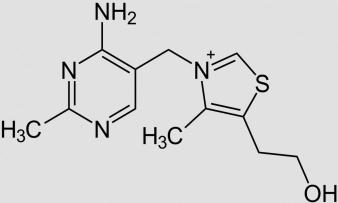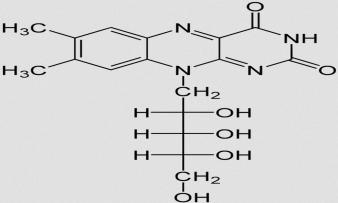Nutrient tables
| Nutritional Information | per 100g | 2000 kcal The numbers show the percent of the recommended daily value for a person who consumes 2000 cal per day. This number is for one serving of the recipe. A person normally eats multiple times a day and consumes additional nutrients. You can get all of the nutrients you need over a longer period of time and in this way ensure a healthy balance. |
|---|---|---|
| Energy | 325 kcal 1'360 kJ | 16.2% Recommended daily allowance according to the GDA: 2000kcal |
| Fat/Lipids | 7.6 g | 10.9% Recommended daily allowance according to the GDA: 70g |
| Saturated Fats | 1.0 g | 5.0% Recommended daily allowance according to the GDA: 20g |
| Carbohydrates (inc.dietary fiber) | 41 g | 15.3% Recommended daily allowance according to the GDA: 270g |
| Sugars | 0 g | 0.0% Recommended daily allowance according to the GDA: 90g |
| Fiber | 27 g | 107.6% Recommended daily allowance according to the GDA: 25g |
| Protein/Albumin | 40 g | 80.9% Recommended daily allowance according to the GDA: 50g |
| Cooking Salt (Na:51.0 mg) | 130 mg | 5.4% Recommended daily allowance according to the GDA: 2.4g |
| Essential micronutrients with the highest proportions | per 100g | 2000 kcal | |
|---|---|---|---|
| Vit | Folate, as the active form of folic acid (née vitamin B9 and | 2'340 µg | 1'170.0% Recommended daily allowance according to the EU: LMIV-2011: 200 µg |
| Vit | Thiamine (vitamin B1) | 11 mg | 999.0% Recommended daily allowance according to the EU: LMIV-2011: 1.1 mg |
| Vit | Riboflavin (vitamin B2) | 4.0 mg | 286.0% Recommended daily allowance according to the EU: LMIV-2011: 1.4 mg |
| Vit | Niacin (née vitamin B3) | 40 mg | 251.0% Recommended daily allowance according to the EU: LMIV-2011: 16 mg |
| Vit | Pantothenic acid (vitamin B5) | 14 mg | 225.0% Recommended daily allowance according to the EU: LMIV-2011: 6.0 mg |
| Prot | Tryptophan (Trp, W) | 0.54 g | 218.0% Recommended daily allowance according to the WHO-Protein-2002: 0.25 g |
| Prot | Threonine (Thr, T) | 2.0 g | 214.0% Recommended daily allowance according to the WHO-Protein-2002: 0.93 g |
| Prot | Lysine (Lys, K) | 3.3 g | 176.0% Recommended daily allowance according to the WHO-Protein-2002: 1.9 g |
| Prot | Isoleucine (Ile, I) | 1.9 g | 152.0% Recommended daily allowance according to the WHO-Protein-2002: 1.2 g |
| Prot | Valine (Val, V) | 2.3 g | 143.0% Recommended daily allowance according to the WHO-Protein-2002: 1.6 g |
Detailed micronutrients and daily requirement coverage per 100g
Explanations of nutrient tables in general
The majority of the nutritional information comes from the USDA (US Department of Agriculture). This means that the information for natural products is often incomplete or only given within broader categories, whereas in most cases products made from these have more complete information displayed.
If we take flaxseed, for example, the important essential amino acid ALA (omega-3) is only included in an overarching category whereas for flaxseed oil ALA is listed specifically. In time, we will be able to change this, but it will require a lot of work. An “i” appears behind ingredients that have been adjusted and an explanation appears when you hover over this symbol.
For Erb Muesli, the original calculations resulted in 48 % of the daily requirement of ALA — but with the correction, we see that the muesli actually covers >100 % of the necessary recommendation for the omega-3 fatty acid ALA. Our goal is to eventually be able to compare the nutritional value of our recipes with those that are used in conventional western lifestyles.
| Essential fatty acids | per 100g | 2000 kcal The numbers show the percent of the recommended daily value for a person who consumes 2000 cal per day. This number is for one serving of the recipe. A person normally eats multiple times a day and consumes additional nutrients. You can get all of the nutrients you need over a longer period of time and in this way ensure a healthy balance. |
|---|---|---|
| Alpha-Linolenic acid; ALA; 18:3 omega-3 | 0 g | < 0.1% Recommended daily allowance according to the CH-EDI-Verordnung: 2.0 g |
| Linoleic acid; LA; 18:2 omega-6 | 0.02 g | < 0.1% Recommended daily allowance according to the CH-EDI-Verordnung: 10 g |
| Essential amino acids | per 100g | 2000 kcal The numbers show the percent of the recommended daily value for a person who consumes 2000 cal per day. This number is for one serving of the recipe. A person normally eats multiple times a day and consumes additional nutrients. You can get all of the nutrients you need over a longer period of time and in this way ensure a healthy balance. |
|---|---|---|
| Tryptophan (Trp, W) | 0.54 g | 218.0% Recommended daily allowance according to the WHO-Protein-2002: 0.25 g |
| Threonine (Thr, T) | 2.0 g | 214.0% Recommended daily allowance according to the WHO-Protein-2002: 0.93 g |
| Lysine (Lys, K) | 3.3 g | 176.0% Recommended daily allowance according to the WHO-Protein-2002: 1.9 g |
| Isoleucine (Ile, I) | 1.9 g | 152.0% Recommended daily allowance according to the WHO-Protein-2002: 1.2 g |
| Valine (Val, V) | 2.3 g | 143.0% Recommended daily allowance according to the WHO-Protein-2002: 1.6 g |
| Leucine (Leu, L) | 2.9 g | 121.0% Recommended daily allowance according to the WHO-Protein-2002: 2.4 g |
| Phenylalanine (Phe, F) | 1.8 g | 113.0% Recommended daily allowance according to the WHO-Protein-2002: 1.6 g |
| Methionine (Met, M) | 0.59 g | 63.0% Recommended daily allowance according to the WHO-Protein-2002: 0.93 g |
| Vitamins | per 100g | 2000 kcal The numbers show the percent of the recommended daily value for a person who consumes 2000 cal per day. This number is for one serving of the recipe. A person normally eats multiple times a day and consumes additional nutrients. You can get all of the nutrients you need over a longer period of time and in this way ensure a healthy balance. |
|---|---|---|
| Folate, as the active form of folic acid (née vitamin B9 and | 2'340 µg | 1'170.0% Recommended daily allowance according to the EU: LMIV-2011: 200 µg |
| Thiamine (vitamin B1) | 11 mg | 999.0% Recommended daily allowance according to the EU: LMIV-2011: 1.1 mg |
| Riboflavin (vitamin B2) | 4.0 mg | 286.0% Recommended daily allowance according to the EU: LMIV-2011: 1.4 mg |
| Niacin (née vitamin B3) | 40 mg | 251.0% Recommended daily allowance according to the EU: LMIV-2011: 16 mg |
| Pantothenic acid (vitamin B5) | 14 mg | 225.0% Recommended daily allowance according to the EU: LMIV-2011: 6.0 mg |
| Vitamin B6 (pyridoxine) | 1.5 mg | 107.0% Recommended daily allowance according to the EU: LMIV-2011: 1.4 mg |
| Vitamin B12 (Cobalamin) | 0.07 µg | 3.0% Recommended daily allowance according to the EU: LMIV-2011: 2.5 µg |
| Vitamin K | 0.40 µg | 1.0% Recommended daily allowance according to the EU: LMIV-2011: 75 µg |
| Vitamin C (ascorbic acid) | 0.30 mg | < 0.1% Recommended daily allowance according to the EU: LMIV-2011: 80 mg |
| Vitamin A, as RAE | 0 µg | < 0.1% Recommended daily allowance according to the EU: LMIV-2011: 800 µg |
| Vitamin D | 0 µg | < 0.1% Recommended daily allowance according to the EU: LMIV-2011: 5.0 µg |
| Essential macroelements (macronutrients) | per 100g | 2000 kcal The numbers show the percent of the recommended daily value for a person who consumes 2000 cal per day. This number is for one serving of the recipe. A person normally eats multiple times a day and consumes additional nutrients. You can get all of the nutrients you need over a longer period of time and in this way ensure a healthy balance. |
|---|---|---|
| Phosphorus, P | 637 mg | 91.0% Recommended daily allowance according to the EU: LMIV-2011: 700 mg |
| Potassium, K | 955 mg | 48.0% Recommended daily allowance according to the EU: LMIV-2011: 2'000 mg |
| Magnesium, Mg | 54 mg | 14.0% Recommended daily allowance according to the EU: LMIV-2011: 375 mg |
| Sodium, Na | 51 mg | 6.0% Recommended daily allowance according to the EU: LMIV-2011: 800 mg |
| Calcium, Ca | 30 mg | 4.0% Recommended daily allowance according to the EU: LMIV-2011: 800 mg |
| Essential trace elements (micronutrients) | per 100g | 2000 kcal The numbers show the percent of the recommended daily value for a person who consumes 2000 cal per day. This number is for one serving of the recipe. A person normally eats multiple times a day and consumes additional nutrients. You can get all of the nutrients you need over a longer period of time and in this way ensure a healthy balance. |
|---|---|---|
| Zinc, Zn | 7.9 mg | 79.0% Recommended daily allowance according to the EU: LMIV-2011: 10 mg |
| Copper, Cu | 0.44 mg | 44.0% Recommended daily allowance according to the EU: LMIV-2011: 1.0 mg |
| Iron, Fe | 2.2 mg | 16.0% Recommended daily allowance according to the EU: LMIV-2011: 14 mg |
| Manganese, Mn | 0.31 mg | 16.0% Recommended daily allowance according to the EU: LMIV-2011: 2.0 mg |
| Selenium, Se | 7.9 µg | 14.0% Recommended daily allowance according to the EU: LMIV-2011: 55 µg |







Comments